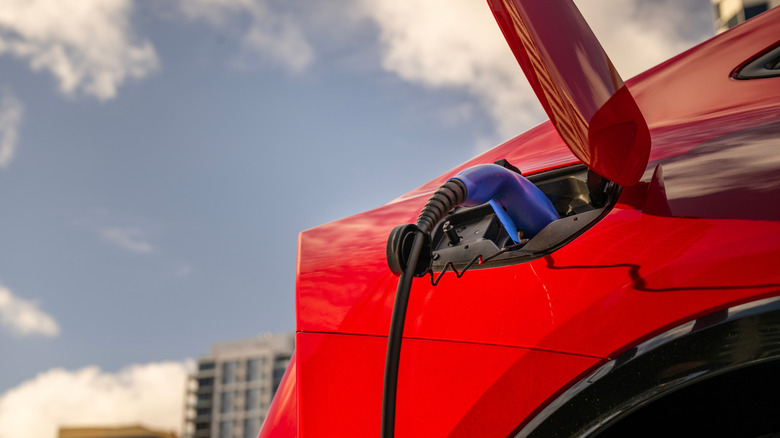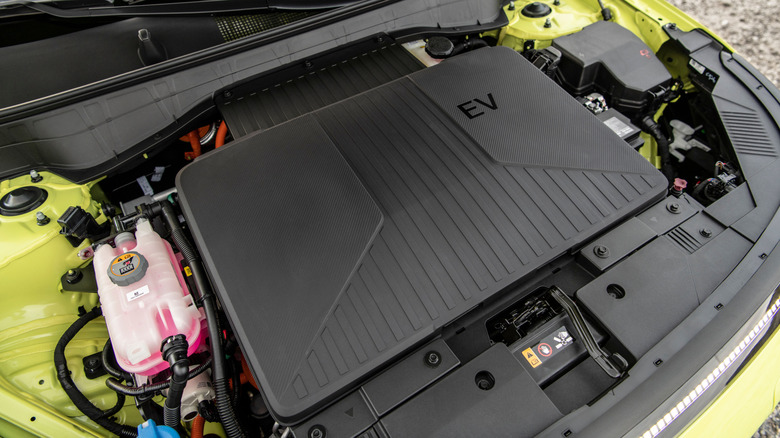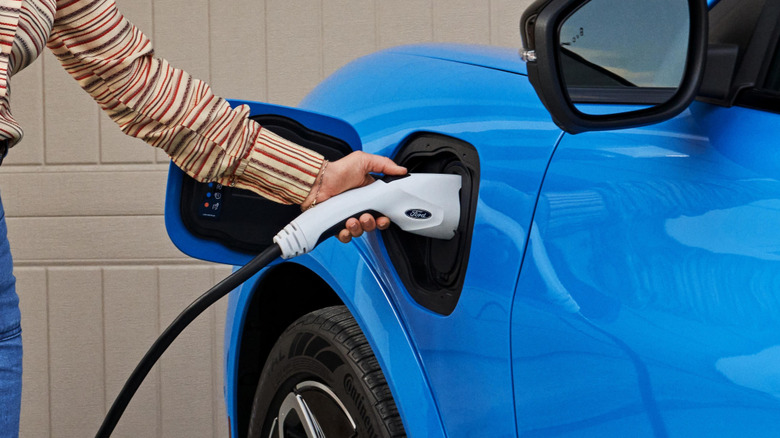What Does MPGe Mean, And How Is It Different From MPG?
Ever since hybrid and electric vehicles have become more prominent in the marketplace, automobile manufacturers have had the unenviable task of trying to convey to potential customers that they are the most fuel-efficient cars on the market. A popular way to do that for an EV is with range. They will tell you how far they estimate your car will be able to drive on a single charge of the battery. This makes a lot of sense in theory, but for those moving over to electric space from traditional gas-powered vehicles for the first time, these people have little experience with range numbers. If an EV can go 387 miles on a single charge, how does that compare to their current vehicle? The efficiency of gas-powered cars is measured in miles per gallon (MPG). That is the measurement most people understand. Well, ever since 2010, car companies have adopted MPGe.
The "e" in MPGe stands for "equivalent," as this measurement aims to convert the efficiency of an electric battery and motor into the parlance of that liquid fuel. This is not a foolproof measurement, but its results look exceptionally good when put on the sticker on the window of a car waiting to be sold. Here, we are going to break down exactly how the Environmental Protection Agency devised the formula for MPGe, why it is a useful measurement to have, and why it is a slightly problematic measurement to use, particularly for hybrid vehicles.
How to get a MPGe number?
In order to determine a hybrid or electric vehicle's MPGe, you will have to do a bit of math. It all starts with the number 33.7 kW. That looks like a random number at first glance, but there is science behind it. The way that gasoline is able to power a car is by burning it. If you were to burn one gallon of gas, it would produce 115,000 BTUs of heat, as measured by the EPA. To move this over into the electric space, you need to find the equivalent amount of electricity required to generate the same amount of heat as burning one gallon of gasoline. That number has been found to be 33.7 kW of electricity.
Once you have that number, you then need to know how much electricity it takes for your car to drive 100 miles. For example, let's take a look at the all-electric 2025 Hyundai Ioniq 5 N. The EPA estimates it will use roughly 43 kWh per 100 miles of range. When you divide 100 by that first number, you get roughly 2.33, and you multiply that number by that original 33.7 kW figure. The result is a combined 79 MPGe. However, the EPA actually measures it at 78 MPGe, but this difference probably just comes down to certain rounding procedures. The actual kWh/100 number is probably a little less than 43, but the EPA rounded up to the whole number for publishing. While hybrids and EVs are unquestionably more efficient than just a gas-powered vehicle, MPGe doesn't always tell the most accurate story.
The issues with MPGe
While MPGe is a nice number to help people transition from gas to electric, it's not without its faults. The first is how we measure MPG and MPGe. Miles per gallon is a measurement where the amount of fuel is a baseline. You burn one gallon of gasoline, and you see how many miles your car travels when that gallon is gone. With MPGe, it works the other way. You drive 100 miles and see how much electricity is used to get to that point. They're meant to represent equivalents, but how do we get there from completely opposite directions?
Then there are hybrids. Saying your car gets 97 MPGe sounds great, but that's only accounting for it running exclusively on electricity. Hybrids don't do that. There's a handoff between an electric motor and a gas-powered engine. These cars will have the MPGe on the sticker right alongside the MPG that you would get running only on gas. Obviously, neither of these numbers is going to be accurate to your actual driving patterns because nobody runs their hybrid that way.
Lastly, for electric vehicles, it could give you a false sense of your car's range. For a gas-powered car, they have a fuel tank that holds a certain amount of gasoline. We can compare the size of the tank to the fuel economy and determine our range. With the aforementioned Hyundai Ioniq 5 N, you might assume you have many hundreds of miles of range with that 78 MPGe, but in reality, the EPA lists its range at just 221 miles. MPGe can be helpful, but you need to look at every stat to get the true picture.


